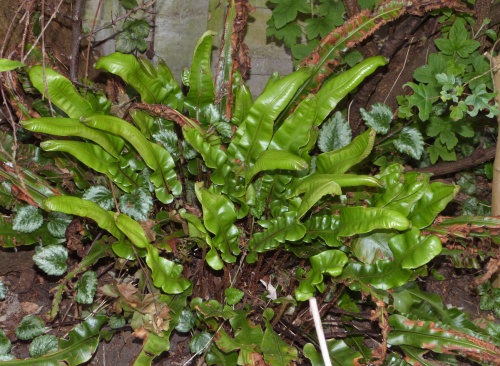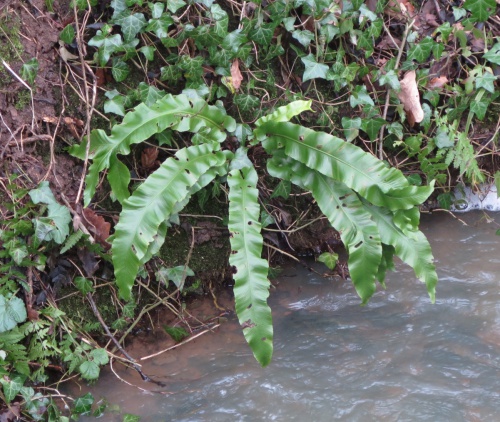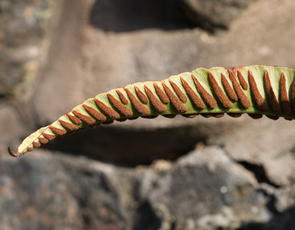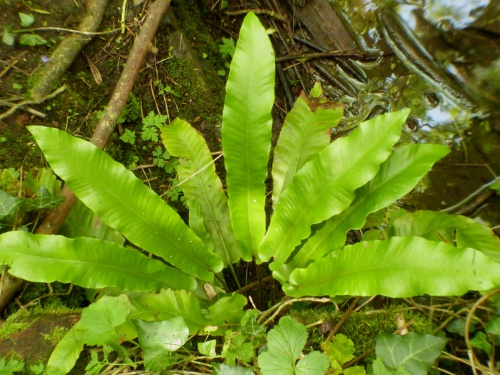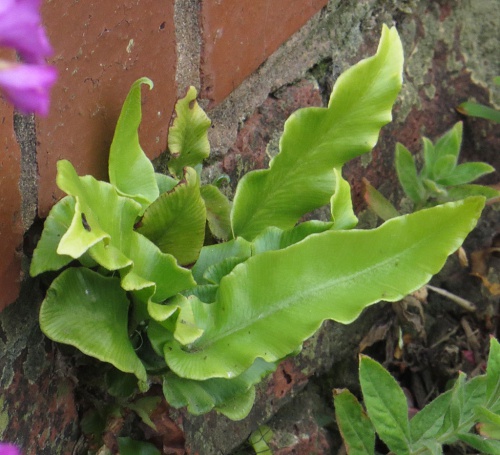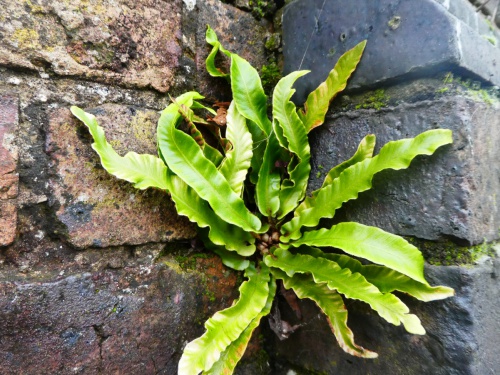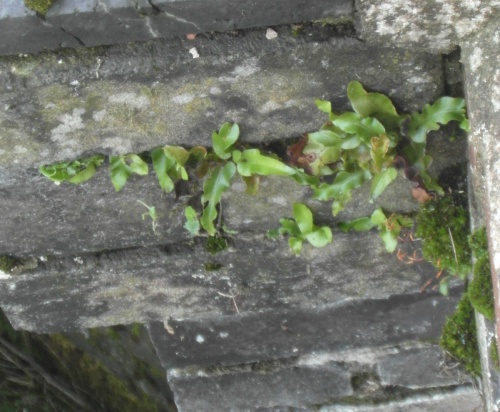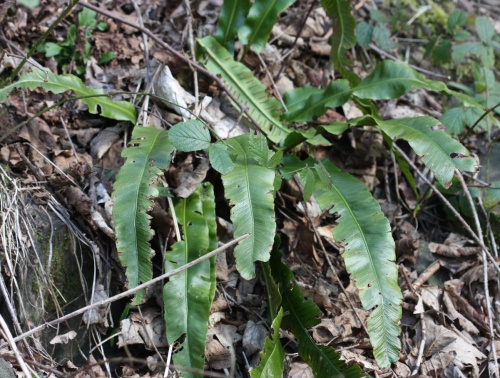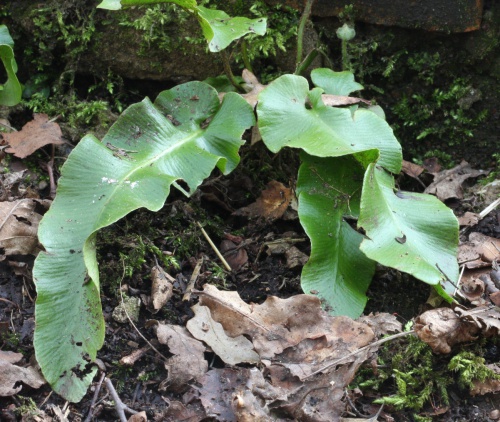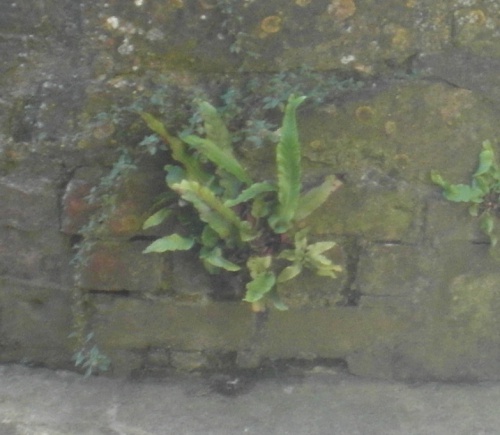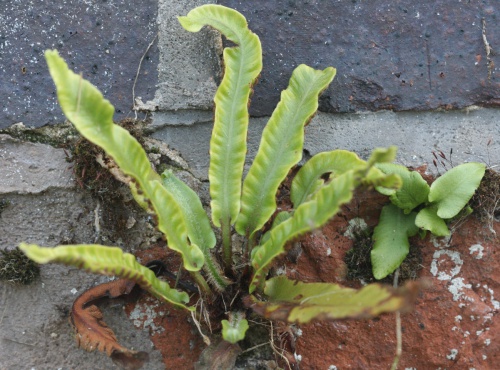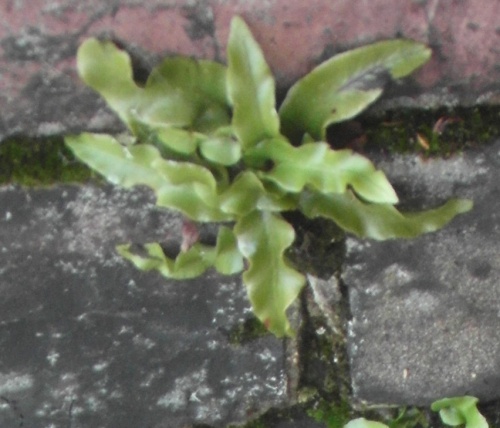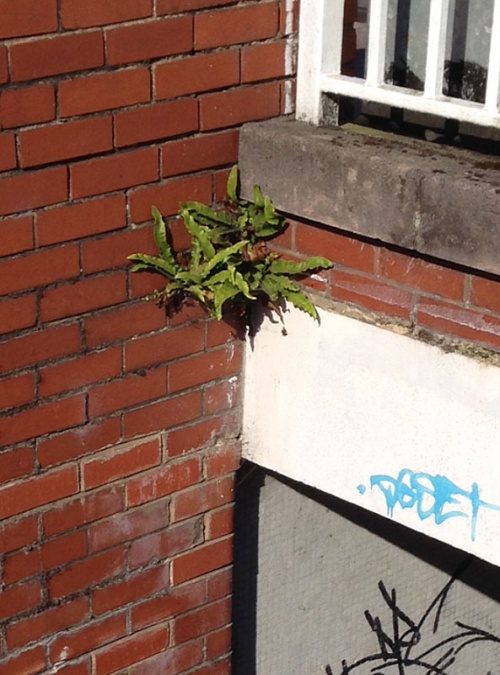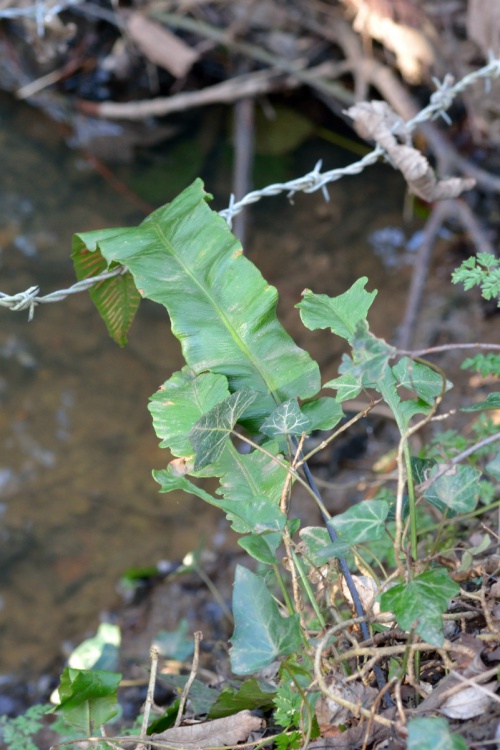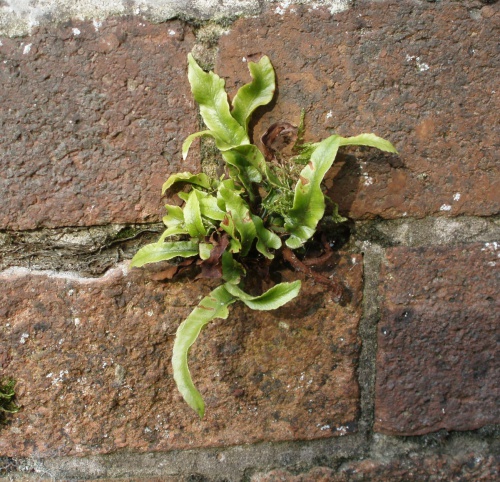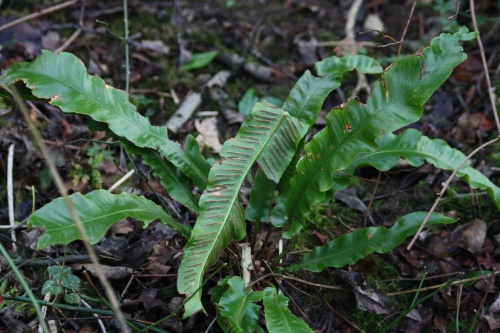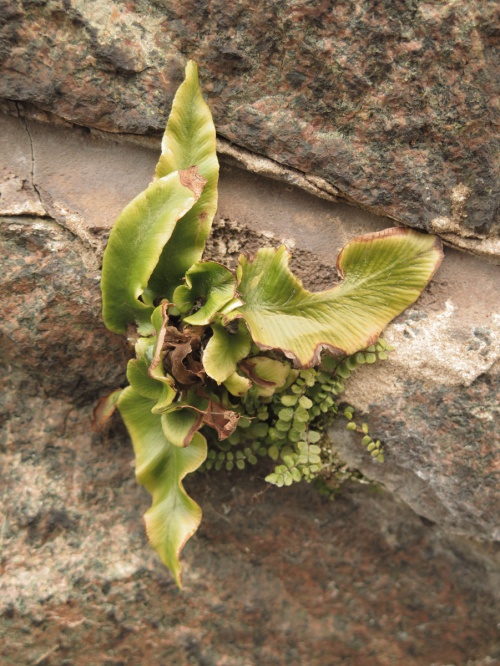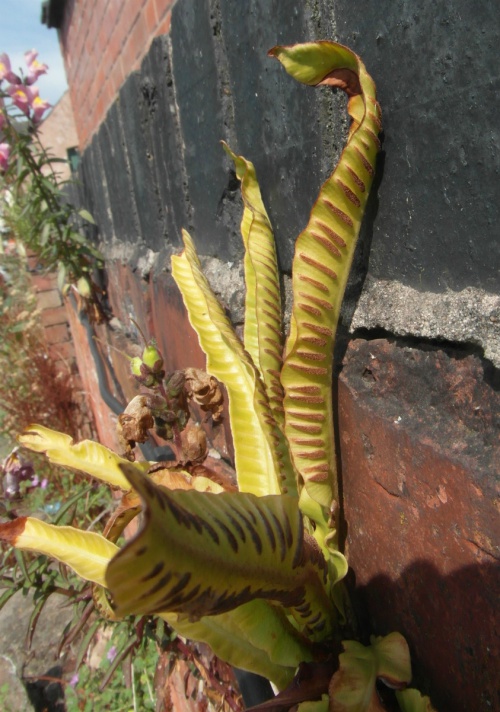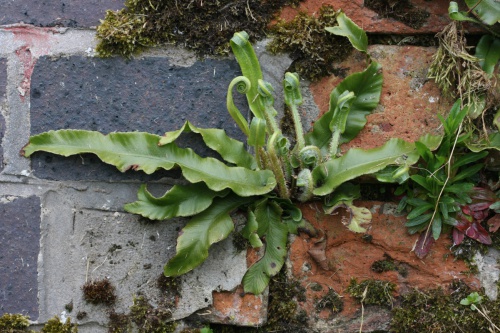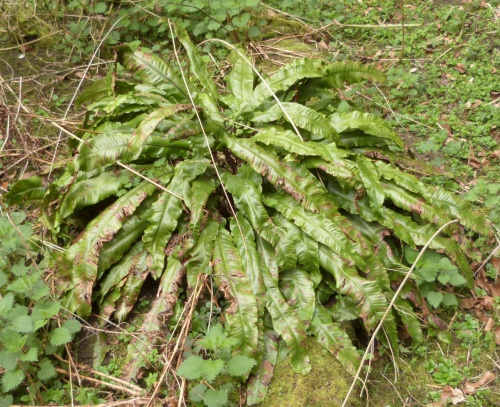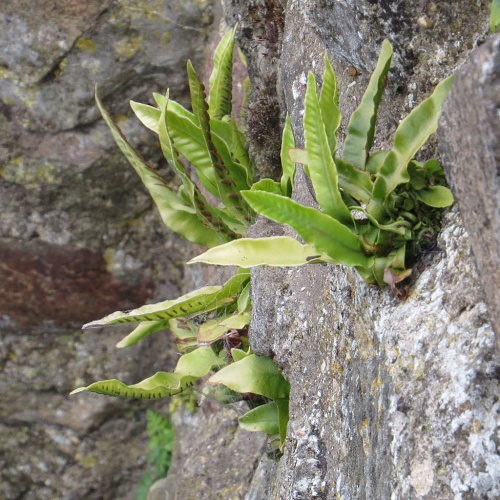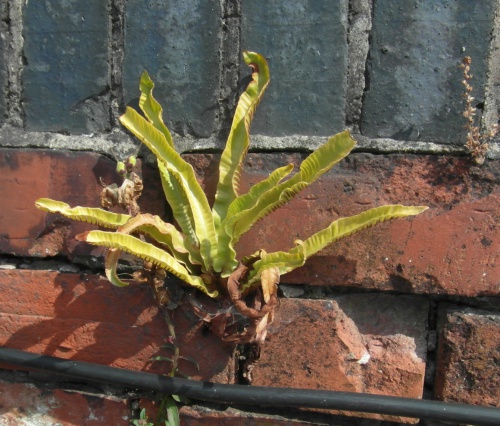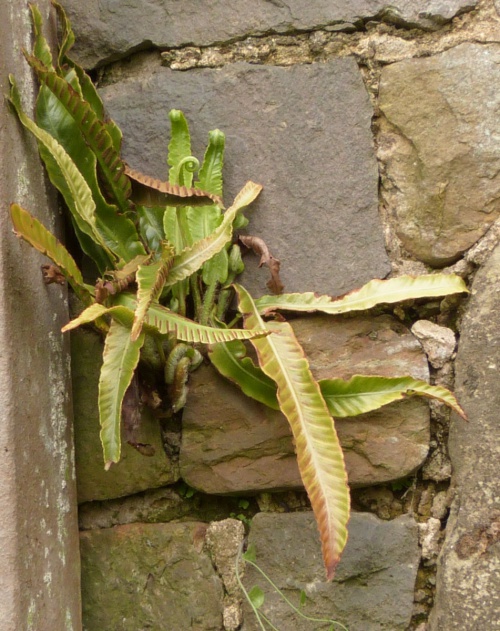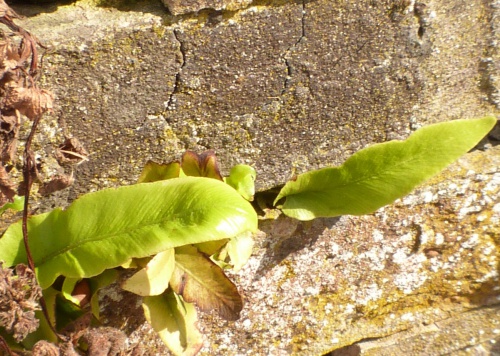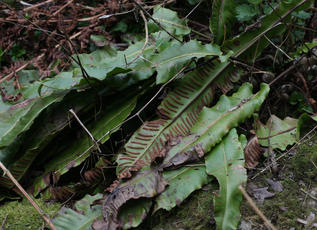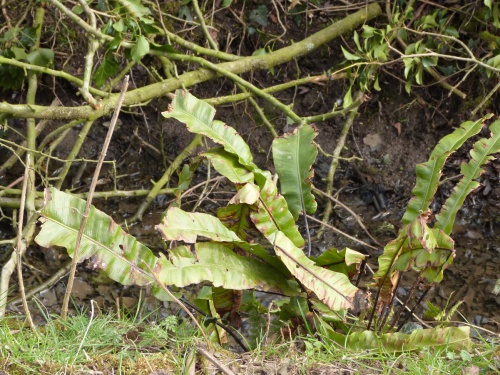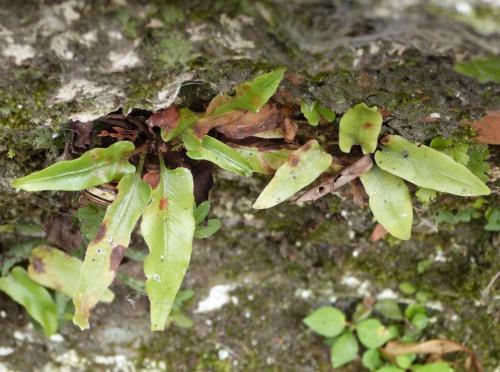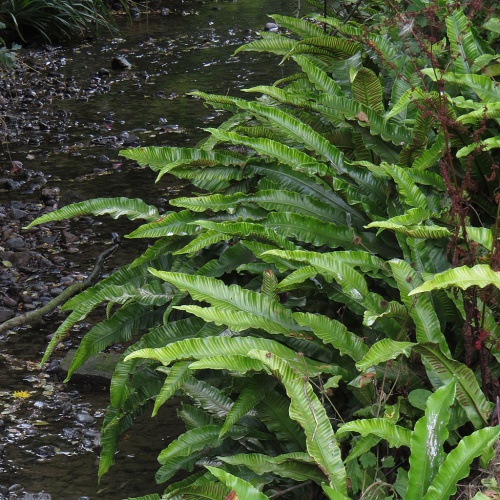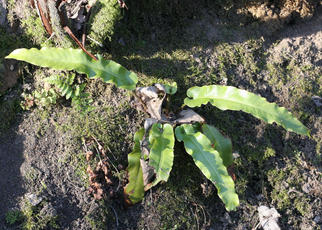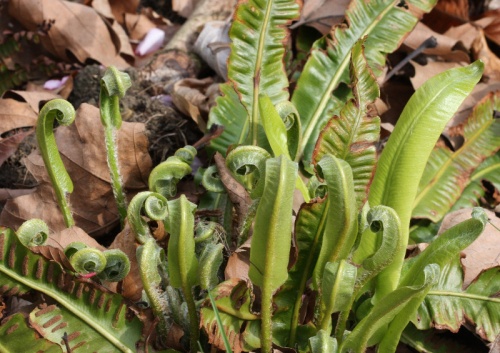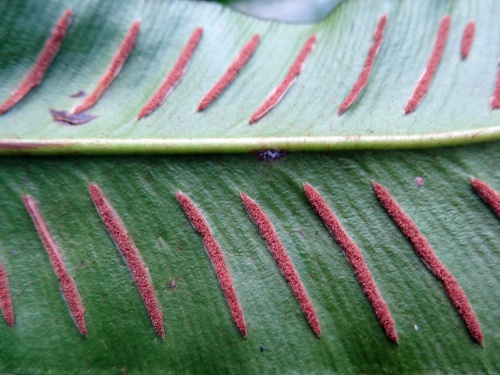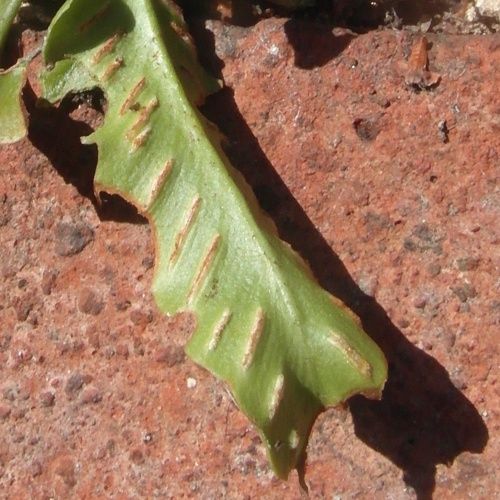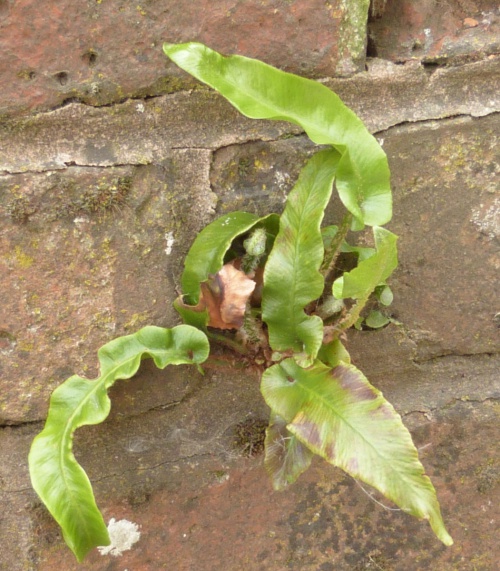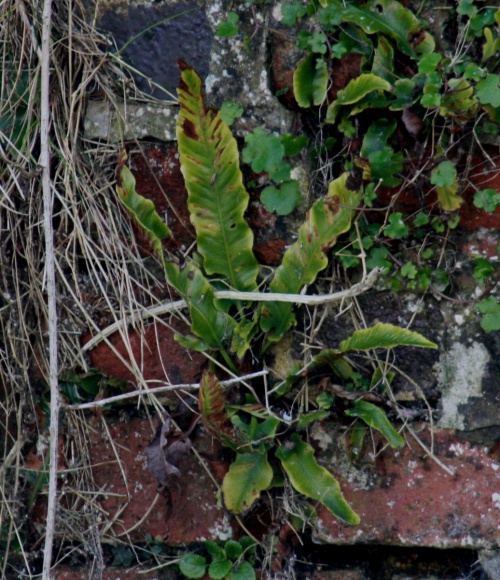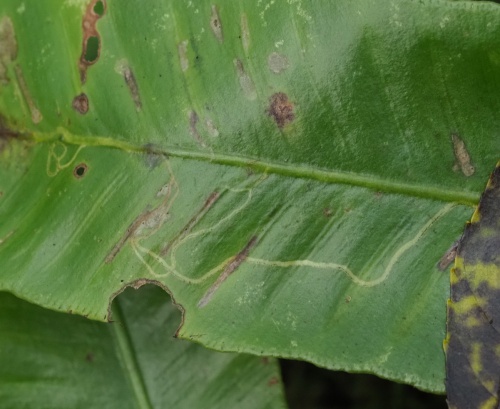Hart's-tongue - Phyllitis scolopendrium
Asplenium scolopendrium
Unique amongst British ferns in having strap-shaped, evergreen, undivided leaves. It is a tufted plant with fronds 10 to 60 cm long and 3 to 6 cm wide, rich, glossy green above with stems up to half the length of the leaf blade. Sori are linear 1 to 3 cm long borne in pairs.
Damp and shady places, woods, hills and banks, walls and rocks.
All year round but spores ripen July and August.
Perennial and evergreen.
Frequent throughout most of Britain except Northern Scotland.
Fairly frequent in damp shady places in Leicestershire and Rutland. In the 1979 Flora survey of Leicestershire it was found in 76 of the 617 tetrads.
Leicestershire & Rutland Map
Enter a town or village to see local records
MAP KEY:
Yellow squares = NBN records (all known data)
Coloured circles = NatureSpot records: 2025+ | 2020-2024 | pre-2020
UK Map
Species profile
- Common names
- Hart's-tongue, Hartstongue Fern
- Species group:
- Ferns & Horsetails
- Kingdom:
- Plantae
- Order:
- Polypodiales
- Family:
- Aspleniaceae
- Records on NatureSpot:
- 340
- First record:
- 27/08/2007 (Dave Wood)
- Last record:
- 13/09/2025 (Charity, Kenneth)
Total records by month
% of records within its species group
10km squares with records
The latest images and records displayed below include those awaiting verification checks so we cannot guarantee that every identification is correct. Once accepted, the record displays a green tick.
In the Latest Records section, click on the header to sort A-Z, and again to sort Z-A. Use the header boxes to filter the list.
Latest images
Latest records
Chromatomyia scolopendri
The larvae of the fly Chromatomyia scolopendri mine the leaves of the ferns: Hart's-tongue, Wall-rue and Polypody. They form long, narrow mines (up to 10cms) which often follow a vein. The mines are normally greenish and upper surface. Pupation is usually in the mine.


